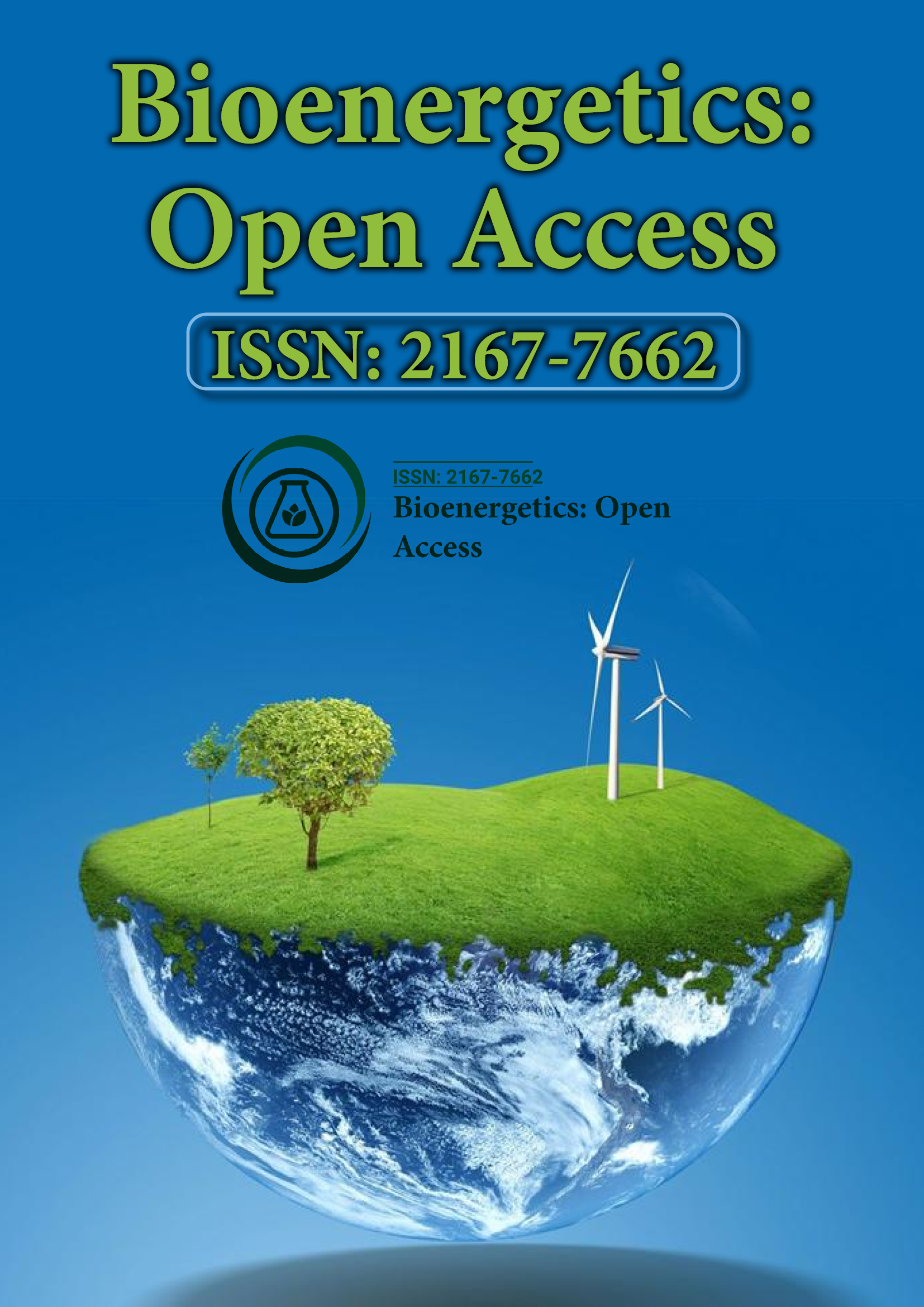Indexed In
- Open J Gate
- Genamics JournalSeek
- Academic Keys
- ResearchBible
- RefSeek
- Directory of Research Journal Indexing (DRJI)
- Hamdard University
- EBSCO A-Z
- OCLC- WorldCat
- Scholarsteer
- Publons
- Euro Pub
- Google Scholar
Useful Links
Share This Page
Journal Flyer

Open Access Journals
- Agri and Aquaculture
- Biochemistry
- Bioinformatics & Systems Biology
- Business & Management
- Chemistry
- Clinical Sciences
- Engineering
- Food & Nutrition
- General Science
- Genetics & Molecular Biology
- Immunology & Microbiology
- Medical Sciences
- Neuroscience & Psychology
- Nursing & Health Care
- Pharmaceutical Sciences
Commentary - (2024) Volume 12, Issue 4
The Role of Metabolism in Fibrosis: A Cellular Perspective on Therapeutic Interventions
Olivia Johnson*Received: 29-Nov-2024, Manuscript No. BEG-24-28105; Editor assigned: 02-Dec-2024, Pre QC No. BEG-24-28105 (PQ); Reviewed: 16-Dec-2024, QC No. BEG-24-28105; Revised: 23-Dec-2024, Manuscript No. BEG-24-28105 (R); Published: 30-Dec-2024, DOI: 10.35248/2167-7662.24.12.277
Description
Organ fibrosis, a pathological process characterized by excessive deposition of Extracellular Matrix (ECM) components, is a final common pathway for many chronic diseases, ultimately leading to organ dysfunction and failure. Despite significant advancements in understanding fibrosis, therapeutic options remain limited. Recent research has highlighted the significant role of changed metabolism and bioenergetics in influencing the pathophysiology of fibrosis. This commentary explains how metabolic reprogramming influences cellular functions in fibrosis, providing insights into potential therapeutic interventions.
The fibrotic process involves diverse cell types, including fibroblasts, epithelial cells, immune cells and endothelial cells, which undergo metabolic reprogramming in response to fibrogenic stimuli. Among these, myofibroblasts play a central role by synthesizing ECM proteins such as collagen and fibronectin. The metabolic demands of these cells are distinct, requiring increased energy and biosynthetic precursors to sustain ECM production. Myofibroblasts exhibit improved glycolysis, even under aerobic conditions, akin to the Warburg effect observed in cancer cells. This metabolic change supports rapid ATP production and provides intermediates for nucleotide, lipid and amino acid biosynthesis. Hypoxia-inducible factor-1α (HIF-1α), a fundamental regulator of glycolysis, is upregulated in fibrotic tissues, particularly under hypoxic conditions prevalent in fibrosis. HIF-1α activation drives the expression of glycolytic enzymes, promoting metabolic rewiring and sustaining fibrotic activity.
Mitochondrial dysfunction is another defining feature of fibrosis. In normal physiology, mitochondria are essential for Oxidative Phosphorylation (OXPHOS), generating ATP through the Electron Transport Chain (ETC). However, in fibrosis, impaired ETC activity and changed mitochondrial dynamics contribute to reduce OXPHOS and increased Reactive Oxygen Species (ROS) production. Excessive ROS generation exacerbates cellular damage, activates fibrogenic signaling pathways and perpetuates a profibrotic environment. Lipid metabolism also plays an essential role in fibrosis. Dysregulated lipid uptake, synthesis and oxidation contribute to fibroblast activation and ECM production. For example, lipid peroxidation products, such as 4-hydroxynonenal, have been associated in the activation of transforming growth factor-β1, a master regulator of fibrosis. Moreover, fatty acid oxidation provides an alternative energy source, further supporting the bioenergetic demands of fibrotic cells.
The complexity between different cell types and their metabolic pathways creates a complex network that sustains the fibrotic process. Immune cells, particularly macrophages, undergo metabolic polarization that influences fibrosis. Pro-inflammatory M1 macrophages rely on glycolysis, while pro-fibrotic M2 macrophages exhibit enhanced oxidative metabolism. These macrophages secrete cytokines and growth factors, such as TGF- β1 and Platelet-Derived Growth Factor (PDGF), which modulate fibroblast metabolism and activity. Similarly, epithelial and endothelial cells contribute to fibrosis through metabolic reprogramming during epithelial-to-mesenchymal transition and endothelial-to-mesenchymal transition. Both processes are energyintensive, requiring metabolic changes to glycolysis and fatty acid oxidation to support cellular transformation.
Given the centrality of metabolic reprogramming in fibrosis, targeting these pathways offers promising therapeutic avenues. Several strategies are under investigation. Pharmacological inhibitors of glycolysis, such as 2-deoxy-D-glucose and dichloroacetate, have shown anti-fibrotic effects in preclinical models. These agents disrupt the energy supply of myofibroblasts, reducing ECM production. Therapies aimed at restoring mitochondrial function and reducing ROS production hold potential. Mitochondria-targeted antioxidants, such as mitoTEMPO, have demonstrated efficacy in mitigating oxidative stress and fibrogenesis.
Interventions that modulate lipid metabolism, such as inhibitors of fatty acid synthesis or oxidation, could disrupt the energy balance of fibrotic cells. For example, acetyl-CoA carboxylase inhibitors have shown potential in reducing fibrosis in experimental models. Reprogramming macrophage metabolism to suppress the pro-fibrotic M2 phenotype may attenuate fibrosis. Approaches targeting immune checkpoints or metabolic pathways, such as arginase inhibition, are under exploration. Epigenetic modifications, such as histone acetylation and DNA methylation, influence metabolic gene expression in fibrosis. Drugs targeting epigenetic regulators, including Histone Deacetylase (HDAC) inhibitors, have shown anti-fibrotic effects by modulating metabolic pathways. While the therapeutic potential of targeting metabolism in fibrosis is promising, several challenges remain. Fibrosis is a heterogeneous process, with metabolic profiles varying across organs and disease stages. Personalized approaches considering patient-specific metabolic and genetic profiles are essential for effective treatment.
In conclusion, the complexity of metabolic communication among different cell types necessitates a systems biology approach to identify fundamental nodes for intervention. Advances in omics technologies, such as metabolomics and single-cell RNA sequencing, can provide insights into the metabolic heterogeneity and dynamics of fibrosis. Another critical aspect is balancing therapeutic efficacy with potential off-target effects. Metabolic pathways are essential to normal cellular functions and systemic inhibition may lead to unintended consequences. Therefore, targeted delivery systems and combination therapies are needed to minimize side effects while maximizing therapeutic benefits.
Citation: Johnson O (2024). The Role of Metabolism in Fibrosis: A Cellular Perspective on Therapeutic Interventions. J Bio Energetics. 12:277.
Copyright: © 2024 Johnson O. This is an open access article distributed under the terms of the Creative Commons Attribution License, which permits unrestricted use, distribution, and reproduction in any medium, provided the original author and source are credited.
